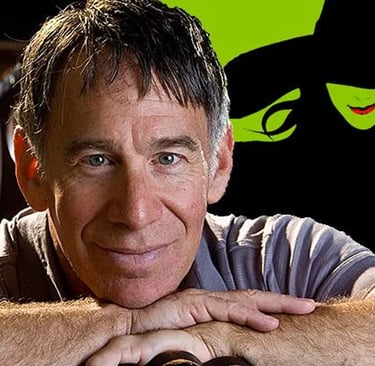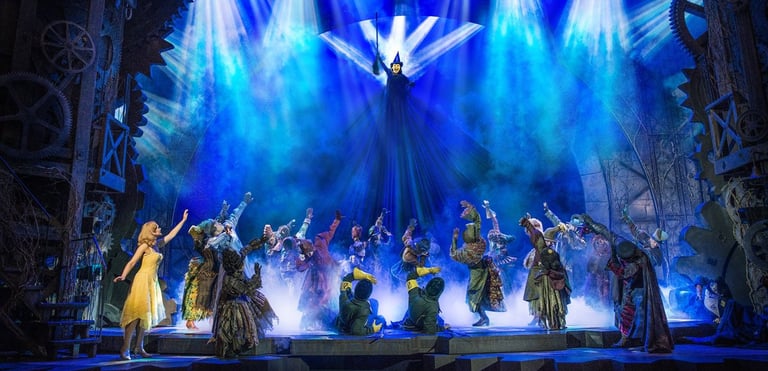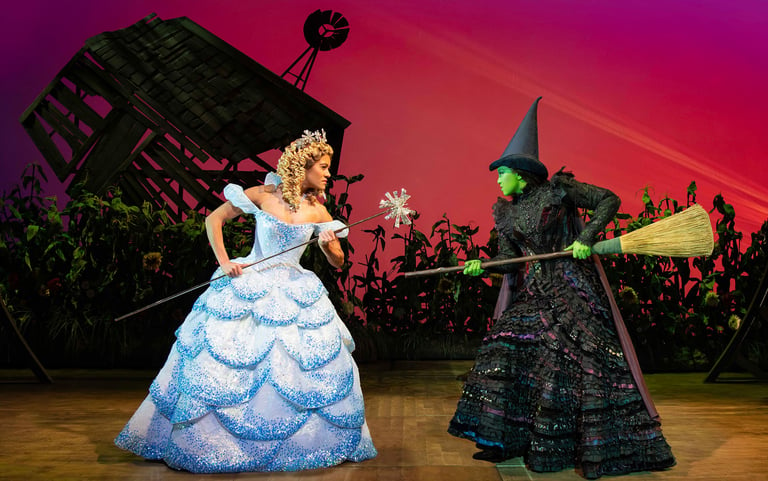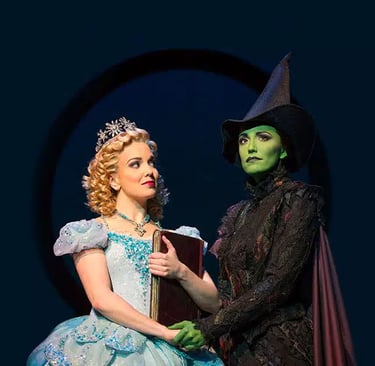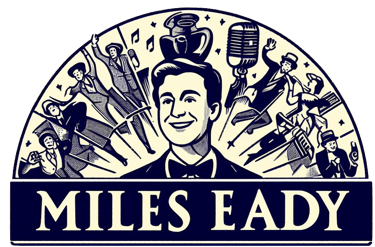From Oz to Wicked Part Four: Unlocking Wicked: The Academic Take
Scholarly and thematic analysis
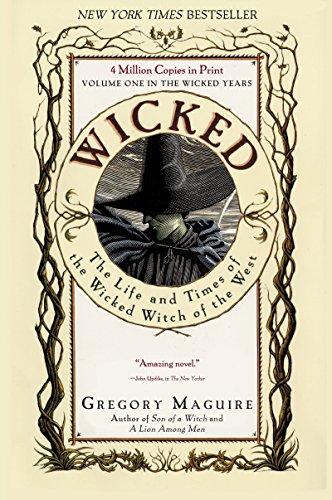

Wicked presnets its audience with two women, one green, one blonde, belting out friendship anthems under emerald sequins. It is a tangle of mythology, morality and identity politics that’s kept academics busily making notes in its margins for twenty years.
Scholars and critics have mapped the show’s meanings with the tools of feminist theory, queer reading and performance studies, concluding that the show functions as a kind of modern day morality play.
Morality Play in Green
The Wizard’s regime in Oz, all Emerald-glinting cheer and civic pride, is an exercise in moral misdirection. His government oppresses sentient Animals—stripping professors of their posts, silencing dissenters—and justifies it in the name of order. Wicked’s most famous number, “Defying Gravity,” becomes an act of civil disobedience and resistance.
The Green Woman as Outsider
Elphaba is Wicked’s moral and emotional heart. Her green pigmentation—absent in L. Frank Baum’s original novels—was a Hollywood invention of 1939, born of the desire to showcase Technicolor’s abilities. Gregory Maguire’s novel, and Stephen Schwartz and Winnie Holzman’s stage version made this metaphor: green as stigma, as difference, as otherness.
Elphaba's narrative is told through Glinda’s memory: the fair, well-spoken, socially acceptable counterpart who narrates the opening number, “No One Mourns the Wicked.” It’s Glinda who frames Elphaba’s reputation—the victors write the moral. Who gets to tell the story and how?
The Gendered Voice
Musically, Wicked encodes a subtext through vocal design. Glinda’s songs shimmer in high soprano registers—which was a late creative decision. Schwartz originally wrote the role for a Broadway alto until Kristin Chenoweth demonstrated how high she could sing. The composer rewrote Glinda’s lines to float above middle C, reasoning that she would sing soprano “only when she’s performing as Glinda the Good.”
Elphaba, conversely, inhabits the belt: chest-voice defiance, rooted, earthly. Their duet “What Is This Feeling?”—half love song, half social combat— pits vocal registers against one another, dramatising class, and authenticity through sound.
Queer Readings and Chosen Kinship
Since its premiere, Wicked has attracted a passionate queer following, inheriting the rainbow aura of its 1939 ancestor. For decades, The Wizard of Oz has been celebrated as a foundational queer text as referred to in a famous New Yorker cartoon in which the Tin Man, Scarecrow, and Lion ask the Wizard, “Would it be too much to ask for a large and devoted gay following?”
Wicked routes the depiction of traditional Broadway romance into female friendship. Elphaba and Glinda’s relationship, as many scholars note, follows the emotional arc of a typical romantic musical couple: attraction, friction, intimacy, separation and loss. Their climactic duet “For Good” reads like a breakup ballad. This is a musical that says the love that shapes you need not be heterosexual—or even enduring—to be transformative.
The Oz Myth Reframed
Scholars have long treated The Wizard of Oz as America’s great mythic allegory. Academics once described it as “a Technicolor retelling of a story older than antiquity”—a hero’s journey by way of Kansas. Wicked inherits that myth and turns it inside out.
Baum’s tale, and MGM’s subsequent version, ended with the message “There’s no place like home.” Maguire’s and Schwartz’s worlds ask the opposite: what if “home” is the problem? What if belonging requires exile?
The Wizard himself, a charlatan with charisma, becomes the embodiment of institutional hypocrisy—the smiling patriarch who manufactures miracles whilst abusing his power. In this way, Wicked functions as the twenty-first-century sequel to the New Deal allegory of 1939: where Harburg’s Emerald City symbolised Rooseveltian hope, Schwartz’s Emerald City exposes media spin and political moral ambiguity.
Intertext and Intellectual Echoes
The so-called “Unlimited Theme” of “Defying Gravity” cheekily borrows the first seven notes of “Over the Rainbow,” changing rhythm and harmony to dodge copyright. Seven notes—just short of infringement—function as musical metaphor: the new show tethered to, but not bound by, the old.
Elsewhere, the composer recycled a chord progression he’d first written in 1971 for The Survival of St. Joan—a medieval martyr musical about faith and persecution. In Wicked, those chords underpin Elphaba’s moral awakening.
Even the film adaptation’s climactic “battle cry,” inspired by Richard Strauss’s Also sprach Zarathustra, carries a philosophical undercurrent. Strauss composed the piece based on Nietzsche’s 1883 work of the same name, which celebrates the idea of the ‘Übermensch’ — the self-creating individual who rises above convention. In Wicked, this is reflected in Elphaba’s flight: a musical embodiment of self-determination, defiance and the power to shape one’s own destiny.
The Academic Afterglow
In the grand tradition of musical-theatre self-awareness, Wicked knows exactly what it is: a spectacle about seeing differently. “Are people born wicked,” Glinda asks, “or do they have wickedness thrust upon them?” The question could be Shakespearean, Brechtian, or postmodern—but Schwartz and Holzman let it hang, unresolved, somewhere in Oz.
Watch
Before you watch: these videos are official releases and still live at time of posting.
Wicked | Official Featurette | Cynthia Erivo, Ariana Grande
Conversation with lead actors about their interpretation of Elphaba and Glinda — great for exploring themes of identity and representation.
Further Reading
Defying Gravity: Queer Conventions in the Musical Wicked by Stacy Wolf
A sharp, illuminating analysis of how Wicked reshapes Broadway’s gender and sexuality narratives, celebrating difference through song.
More information here
Friends “For Good” – Wicked: A New Musical and the Idealization of Friendship by Valerie Lynn Schrader
Examines how the show reframes female friendship as a political and emotional act of rebellion.
More information here
Explore the Series
← Part 3: Wicked on Stage and Screen
→ Part 5: Why We Keep Returning to Emerald City
Wicked Movie - Behind The Scenes (2024)
Raw glimpses of the film process: live vocals on-set, casting choices, rehearsal culture — useful for academic commentary on performance practice.



